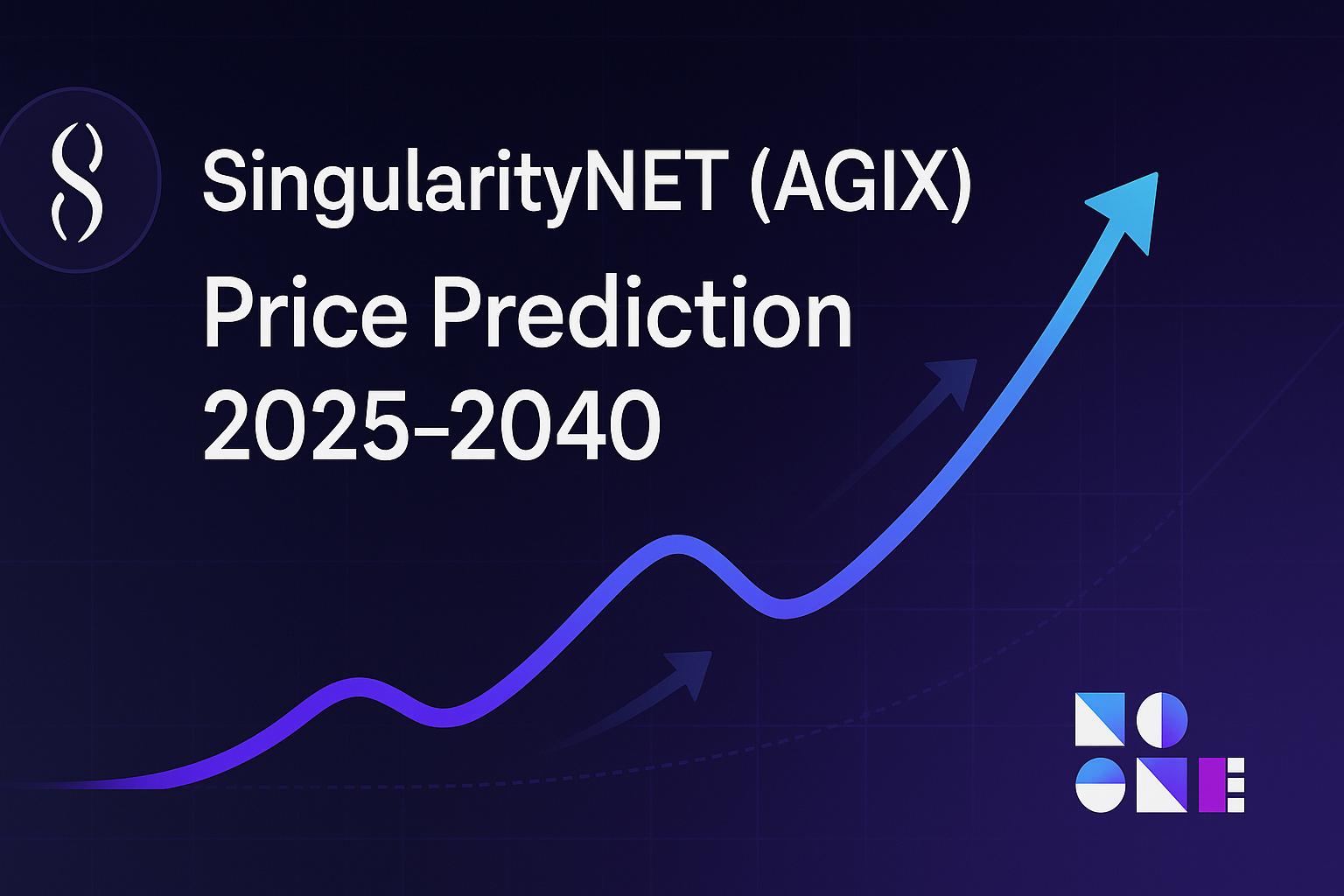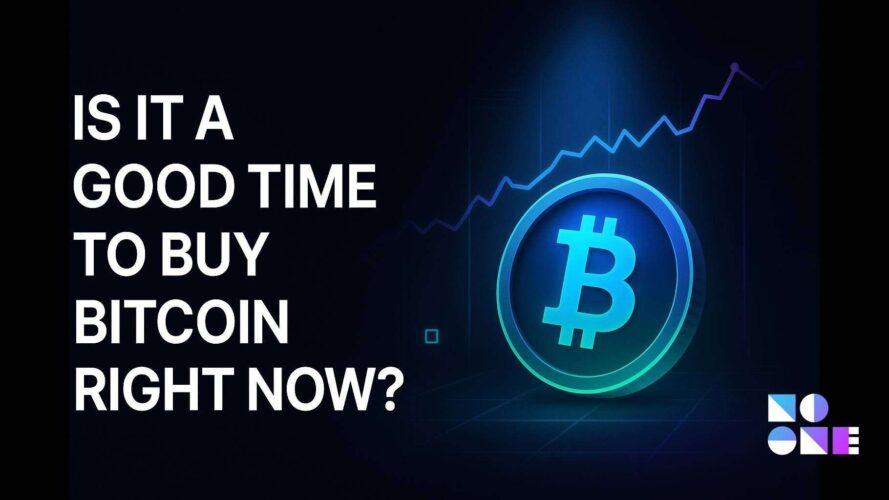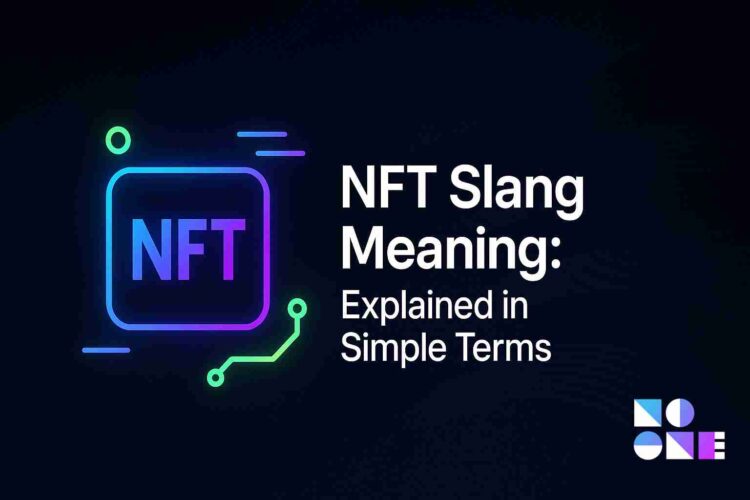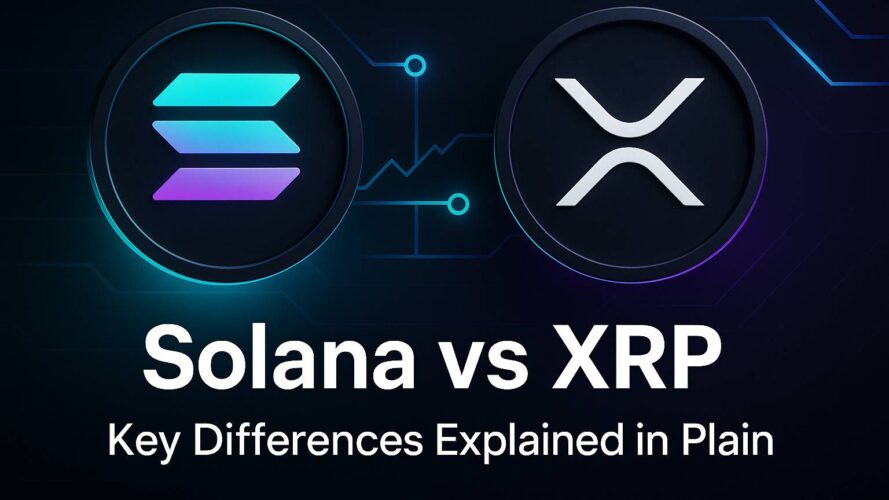SingularityNET (AGIX) Price Prediction 2025–2040
Disclaimer: This is an education article and not financial advice. Do your own research and size positions according to your risk tolerance.
Introduction
This piece presents organized scenarios for SingularityNET (AGIX) across five target years: 2025, 2027, 2030, 2035, and 2040. For each year you’ll find a realistic price range and a short, plain-English explanation of the drivers behind those ranges. The framework uses three buckets for each year: Conservative, Baseline, and Optimistic — so you can compare outcomes and reasoning at a glance.
Tip: Buy, store, and exchange SingularityNET (AGIX) safely with Noone Wallet — a non-custodial wallet that gives you full control of your keys and supports 1,000+ assets across multiple blockchains. You can also send and receive AGIX securely.
What is SingularityNET (AGIX)?
SingularityNET is a decentralized marketplace and infrastructure for AI services. Developers publish and monetize AI agents; consumers and applications compose agents into workflows. AGIX is the network token used for:
- payments,
- staking,
- governance.
Because the project sits at the intersection of AI and blockchain, AGIX’s value depends on both marketplace adoption (service volume and agent quality) and broader sentiment toward AI and crypto.
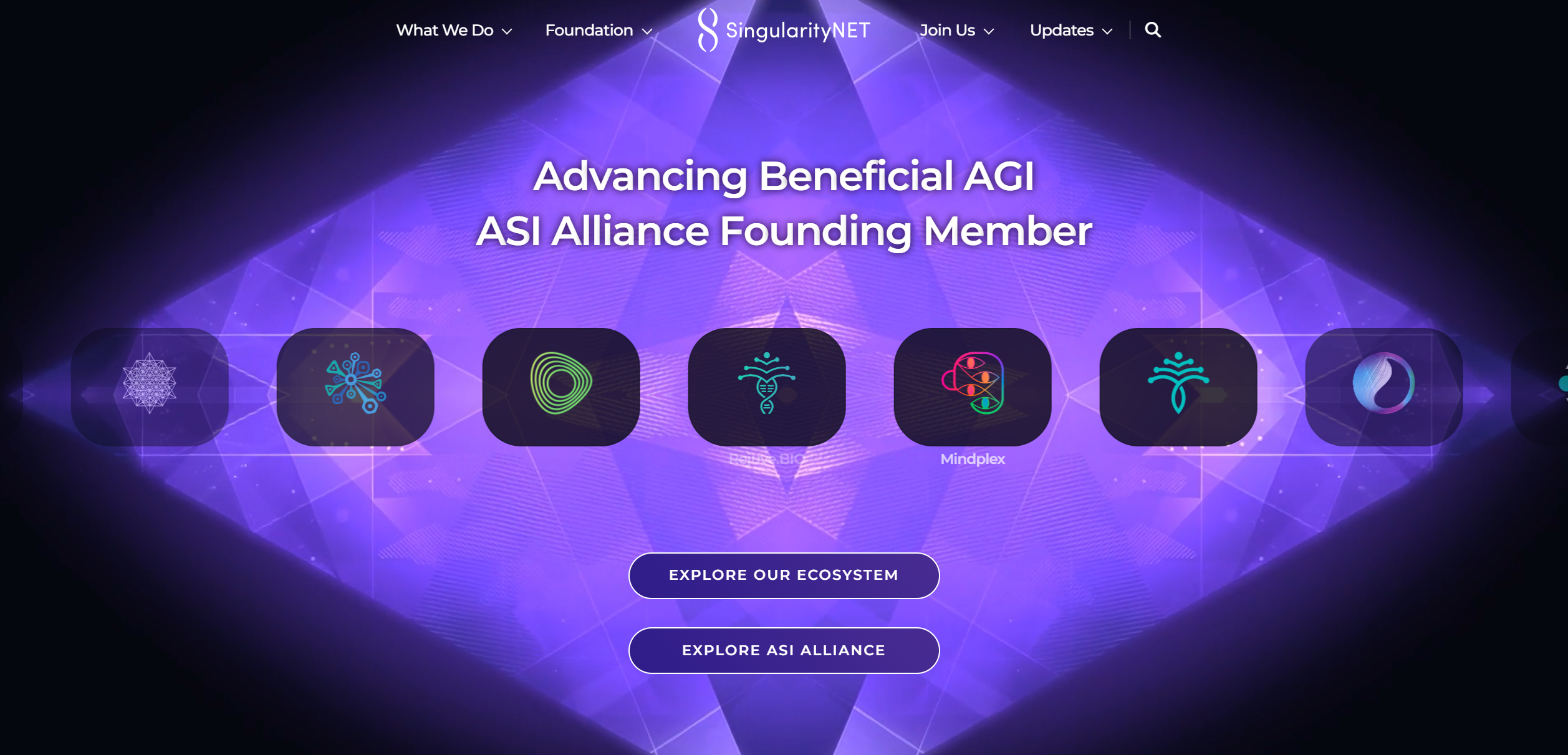
Key fundamentals that matter for price
- Marketplace usage: number of service calls, paid transactions, and recurring buyers.
- Developer activity: quantity and quality of live AI agents and updates.
- Token sinks & staking: whether payments, staking, or protocol fees remove tokens from circulation.
- Integrations & enterprise pilots: revenue-generating projects or pilots using the network.
- Macro & sector sentiment: waves of AI or crypto interest that temporarily amplify demand.
Price targets (scenarios)
Important: these are scenario ranges, not guarantees. AGIX is exposed to AI-sector trends and crypto market cycles.
Price table — Conservative / Baseline / Optimistic
Year | Conservative | Baseline | Optimistic |
|---|---|---|---|
2025 | $0.12 – $0.25 | $0.25 – $0.50 | $0.50 – $0.90 |
2027 | $0.15 – $0.30 | $0.40 – $0.80 | $0.80 – $1.50 |
2030 | $0.25 – $0.60 | $0.90 – $1.80 | $1.80 – $4.00 |
2035 | $0.50 – $1.20 | $2.50 – $4.50 | $4.50 – $10.00 |
2040 | $1.00 – $3.00 | $6.00 – $12.00 | $12.00 – $30.00 |
Why these ranges — concise reasoning
2025
- Conservative: Slow user growth; AGIX remains mainly a research/developer token.
- Baseline: Early marketplace traction with recurring paid service calls and modest staking uptake.
- Optimistic: High-profile partnerships or major exchange flows spark broad retail and institutional interest.
2027
- Conservative: Product progress but strong competition slows monetization.
- Baseline: Network shows steady revenue from services and meaningful staking that reduces short-term sell pressure.
- Optimistic: Successful enterprise pilots and multi-protocol integrations drive sustained demand.
2030
- Conservative: AI-on-chain grows slowly; AGIX benefits modestly.
- Baseline: Decentralized AI tooling gains real adoption in niches (content generation, data labeling, indexing), raising on-chain payment volume.
- Optimistic: SingularityNET becomes a leading marketplace for composable AI agents used by dApps and businesses.
2035
- Conservative: Fragmented market; AGIX remains one of several specialist tokens.
- Baseline: Robust ecosystem with third-party integrators, strong staking economics, and protocol revenue shared with token holders.
- Optimistic: Widespread use of on-chain AI services across industries; AGIX captures a material share of that demand.
2040
- Conservative: Slow, incremental adoption keeps AGIX modestly above today’s levels.
- Baseline: AGIX is a widely used infrastructure token for decentralized AI marketplaces.
- Optimistic: Decentralized AI is a core part of many digital services; AGIX is a primary settlement and governance token in that landscape.
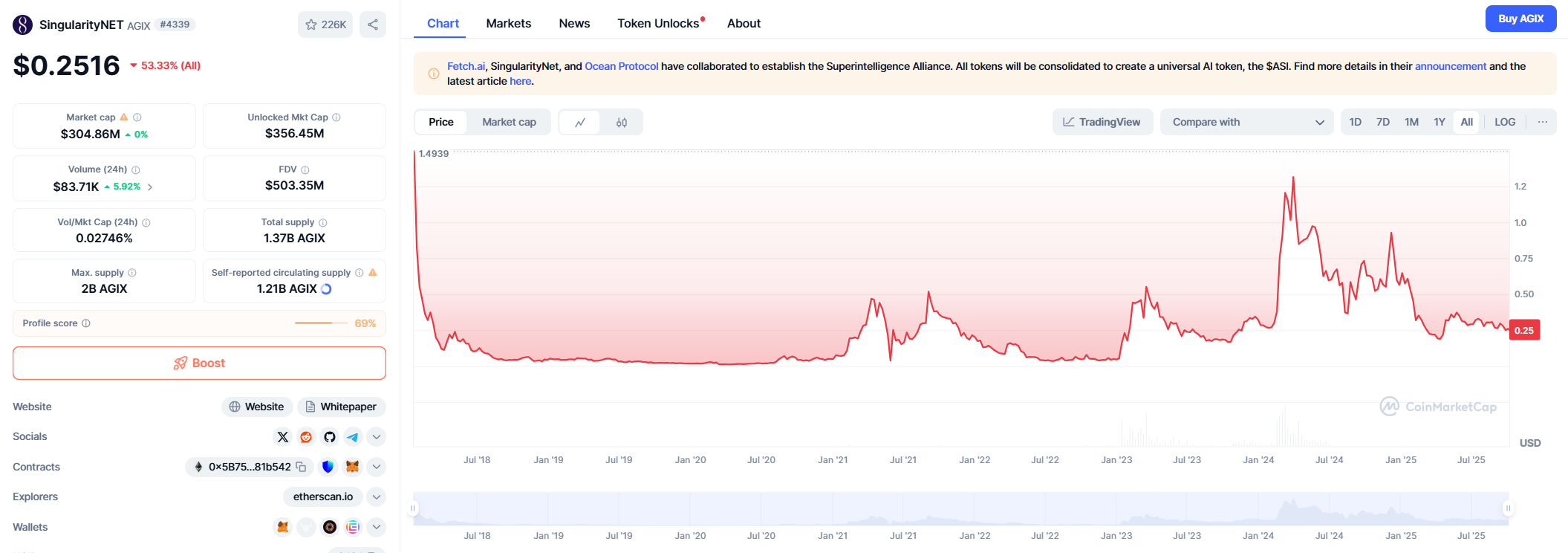
Historical behaviour & context (brief)
AGIX tends to react to two overlapping narratives:
- Crypto market cycles (risk-on vs risk-off), and
- AI-sector sentiment (news, breakthroughs, integrations).
Protocol milestones, listings and staking changes commonly cause short-term spikes; durable appreciation needs repeated real usage and deeper liquidity. Historically, AGIX rallies during combined AI + crypto hype and retraces during broad market corrections.
What to monitor (signals that matter)
- Marketplace metrics: service-call volumes, repeat buyers, average payment per call.
- Developer growth: number of live agents, frequency of updates, third-party apps using the platform.
- Staking & token sinks: staking participation, burns, fee allocation to treasury or buybacks.
- Partnerships / pilots: enterprise deals, research collaborations, integrations with major Web3 projects.
- Macro waves: AI announcements, model breakthroughs, or shifts in crypto risk appetite.
FAQ
Is AGIX a good investment?
This is not financial advice. AGIX gives exposure to both AI adoption and crypto infrastructure — upside if decentralized AI usage grows, downside if adoption lags or markets turn risk-off.
How quickly can AGIX move between scenarios?
Headlines and sector sentiment can create rapid short-term moves. Shifting from baseline to optimistic long-term scenarios requires sustained increases in real usage, partnerships and token sinks.
Should I use these price targets to time trades?
Price targets are planning tools — use them for scenario analysis, not precise timing. Combine them with live on-chain metrics, liquidity checks and an explicit risk plan.
Where do I get authoritative data?
Project docs for protocol mechanics; market aggregators for price/supply data; marketplace dashboards for service volumes and staking stats.
Conclusion
SingularityNET sits at the crossroads of decentralized infrastructure and AI services. Short-term price action will be driven by headlines, listings and macro cycles; long-term appreciation depends on repeatable marketplace usage, meaningful staking/token-sink mechanics, and enterprise or developer adoption. The scenarios above present a structured view — from conservative to optimistic — to help think about possible outcomes without overstating certainty.
Sources & further reading
Project documentation, marketplace dashboards, and major market aggregators for live prices and supply figures.
Summary: Keep your AGIX protected in Noone Wallet — a safe, user-friendly wallet for storing, swapping, sending, and receiving SingularityNET across multiple blockchains.
